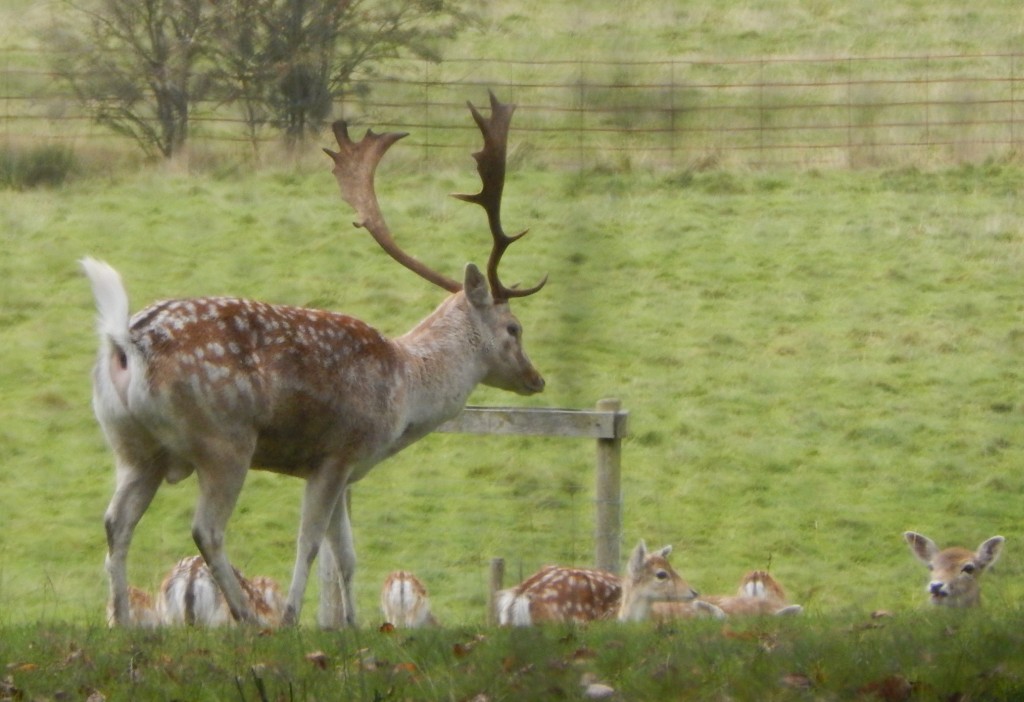
[077] Cervas elaphas, Red Deer and others
Introduction
There are now six species of deer wild in Britain. Cervas Elaphas, the Red Deer is the largest, but we also have Fallow Deer, Roe Deer, Sika Deer, Chinese Water Deer and Muntjac. I will look briefly at all six.
Taxonomy
Kingdom – Animals
Phylum – Chordates
Class – Mammals
Order – Artiodactyla (Even-toed Ungulates)
Family – Cervidae (Deer)
Subfamily – Cervinae
- Cervas elaphas, Red Deer
- Cervas nippon, Sika Deer
- Dama dama, Fallow Deer
- Muntiacus Reevesi, Reeves Muntjac
Subfamily – Capriolinae
- Capreolus capreolus, Roe Deer
Subfamily – Hydropotinae
- Hydropotes inermis inermis, Chinese WaterDeer
Deer in General
Generally, when we think of a type of mammal, we know what genus we are talking about, often the exact species. In Britain we will only find one species of horse, sheep, dog or hedgehog; maybe two types of squirrel if we roam the whole country.
But the family of deer, Cervidae, contains ninety species in three subfamilies and several tribes, varying in size from the Moose (also called an Elk in Britain) at about two metres, to the Northern Pudu with a height of about 30 cm. There is considerable discussion about genera within families, species within genera and whether subspecies should be treated as species.
What distinguishes deer from other even-toed ungulates (giraffes, buffalo, antelope, sheep, goats and cattle,) is their antlers, which are re-grown every year.
We don’t need to look closely at the subfamilies, which differ in the (unused) bones of their ankles.
- Cervinae (Plesiometacarpal)
- Capriolinae (Telemetacarpal)
- Hydropotinae only has one species that many consider to be within Capriolinae.
Britain only has two native species – the Red Deer and Roe Deer. The Fallow Deer has been with us since the Romans and three other species have been introduced more recently, wholly or partly by escaping from collections.
Historically deer have been hunted and they still are in some locations. They are also now regularly farmed for venison.
There are some Eurasian Elk (Moose) and Reindeer (Caribou) in private reserves.
British deer may be widespread and common but they are very wary of human contact and difficult to spot and photograph. I will say a little about each with my very sparse collection of pictures.
Red Deer
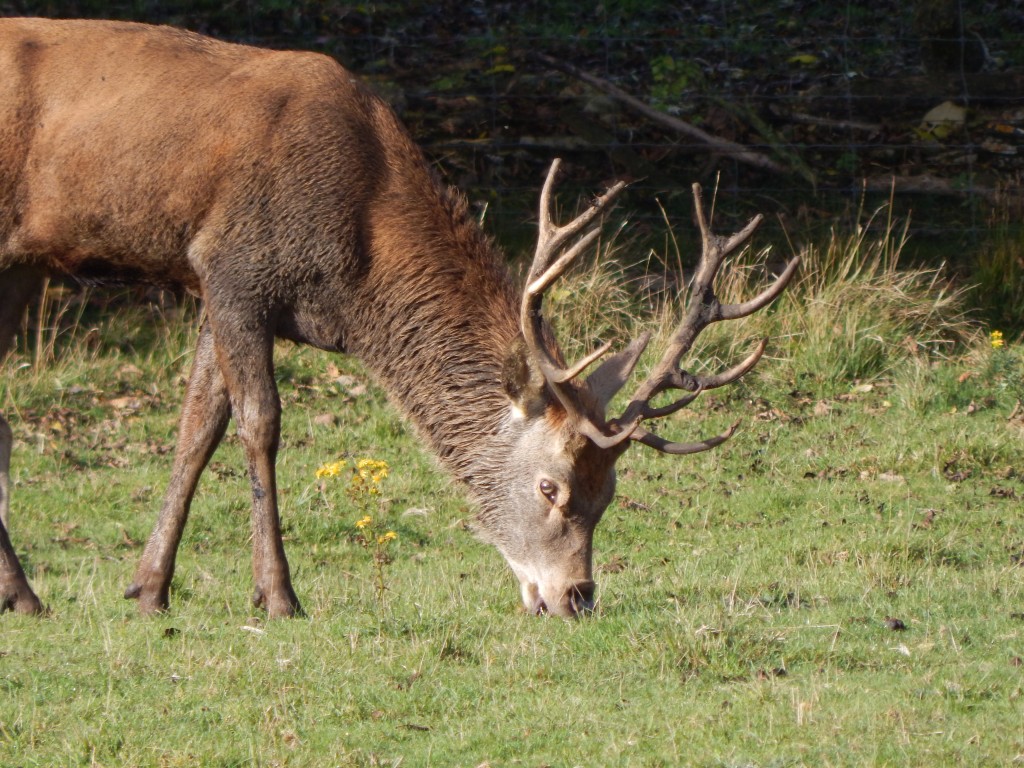
Cervus elephas, Red Deer, is one of the largest species of deer and the largest in Britain. It is native to all of Europe.
Cervus (Latin) and elaphos (Greek) both mean ‘deer.’
There are about a dozen subspecies and it is arguable whether they are actually subspecies. Our version is Cervas elephas scoticus. Only the males develop antlers.
It has a dark red-brown coat. As for almost all species with the word ‘red’ in their name, we have to remember that the word used to include most shades of brown and orange. (See, for example, [035] the Ruddy Turnstone and wait for the story of why [135] Erithacus rubecula is called a Robin.)
Most British wild Red Deer are to be found in Scotland although there are some scattered populations in England and Wales, where they prefer forest locations.
Almost all deer farmed for venison are Red Deer.
Sika Deer
The genus Cervus only includes the Red Deer, the Sika Deer and some other disputed species and subspecies.
Sika Deer, Cervus nippon, are native to eastern Asia. (Hence the name ‘nippon’ for Japan. Sika comes from the Japanese word for deer.) They were introduced to deer parks in the UK in 1860 and some escaped feral populations are now scattered through the country, mostly in Scotland. There is some concern about them hybridising with Red Deer. They prefer woods and heathland.
Fallow Deer
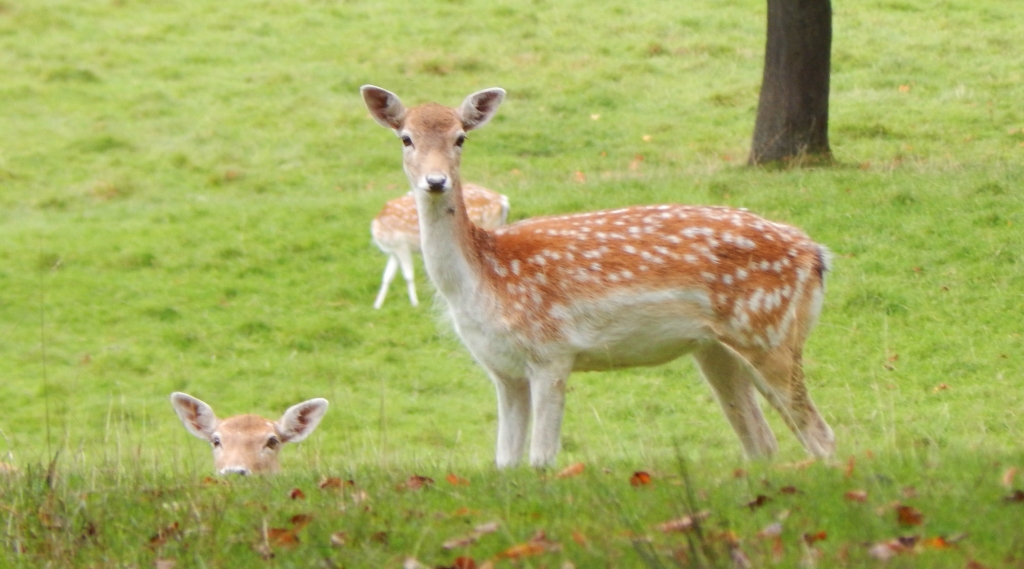
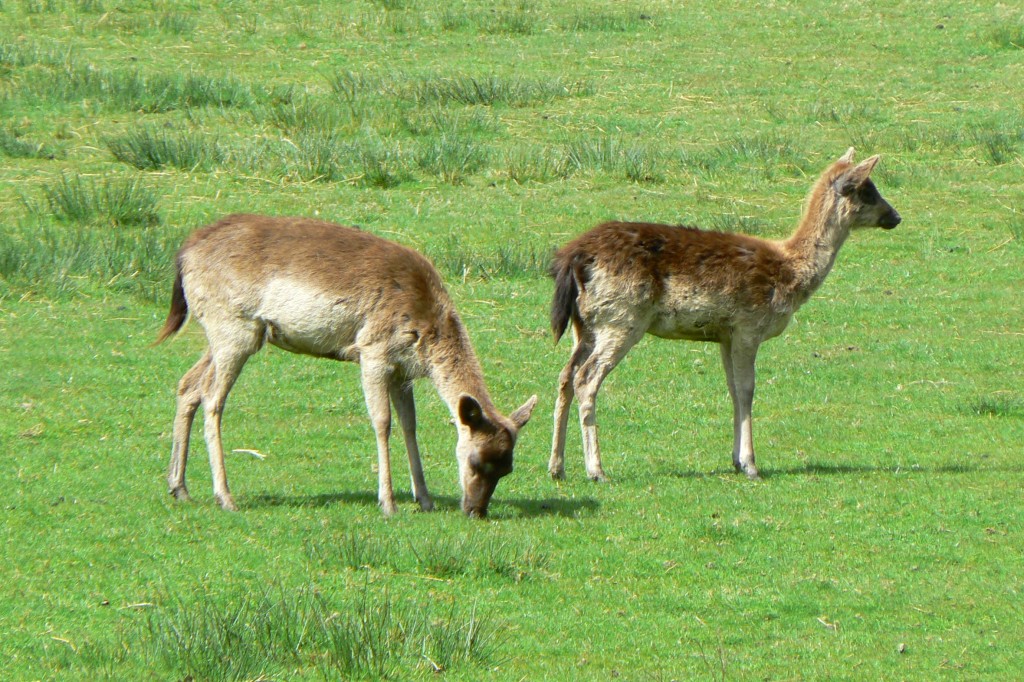
Fallow Deer, Dama dama, have an orange-brown coat with white spots in the summer turning to a duller grey-brown in winter. After dying out in the last Ice Age, they were reintroduced by the Romans and then again by the Normans about a thousand years ago. They are widespread across Britain. Most deer parks have Fallow Deer, sometimes with some Red Deer or Roe Deer.
Fallow is an old English word for a light brown colour. ‘Dama’ comes from the Latin word for Roe Deer, gazelles and antelopes. Until the 1970s it was Cervus dama.
Muntjac
Muntiacus reevesi, Reeves (or Reeves’s) Muntjac or Chines Muntjac, are very small deer, originating from southeast China.
The word Muntjac is latinized from the Dutch version of the Sundanese mēncēk. There are twelve species, all native to Southeast Asia.
Our species honours John Reeves (1774-1856} an English naturalist who worked in China. Strangely there are four species named reevesii after him, but the Muntjac only has reevesi.
There may have been escapes from Woburn Abbey and Whipsnade Zoo and other releases. There are now scattered populations in England. There is concern over their establishment and they are legally defined now as an Invasive Alien Species with all-year hunting permitted.
Roe Deer
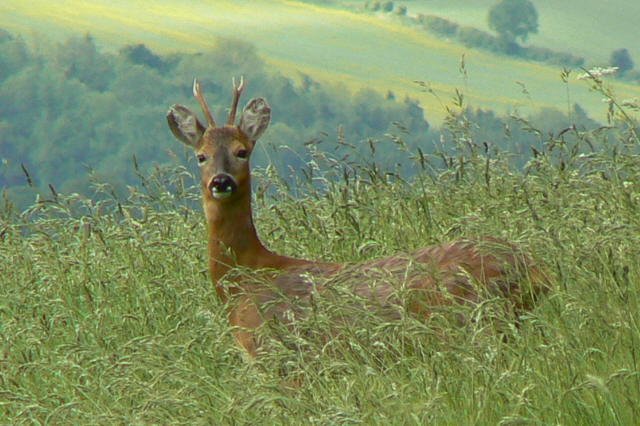
There are two similar species of Roe Deer. We have the European Roe Deer, Capreolus capreolus, native to the UK and most of Europe but not found in Ireland. They are the most widespread species of British deer. After almost disappearing from southern England, they were reintroduced to Norfolk in 1884 and have now re-established their range. They prefer woodland but will venture into farmland to feed when there are no people about and they have an easy escape route back to the forest. There are now even some urban populations.
Capreolus is the Latin for the Roe Deer.
Roe comes from an Old English word meaning spotted. All Roe deer are spotted when young and some types keep their spots as adults. [They were, of course, named long before we saw Fallow Deer.]
Water Deer
Water Deer are unusual deer in that they don’t have antlers. They have prominent canine tusks. They tend to inhabit water areas where they can hide in reeds. There are two subspecies. We have the Chinese Water Deer, Hydropotes inermis inermis. The other subspecies is called the Korean Water Deer.
From Greek roots, Hydropotes means ‘water-drinking.’ From Latin roots, inermis means unarmed or defenceless because it has no antlers.
They were introduced to Britain in the 1870s, initially in London Zoo at Regent’s Park and transferred to Woburn Abbey. More were introduced at Woburn and Whipsnade Zoo, both in Bedfordshire, and those two sites currently have about a thousand deer.
The British population derives from escapes and releases and they have spread over much of East Anglia, preferring wetland grassy areas. The population continues to increase.
Other Notes
Names may be a bit confusing. For Red Deer and Sika Deer, male and female are called stags and hinds and the young are calves.
For the other four, male and female are called bucks and does. The young Roe Deer is a kid; for Fallow Deer or Water Deer it is a fawn; and for a Muntjac … it is either a kid or a fawn!
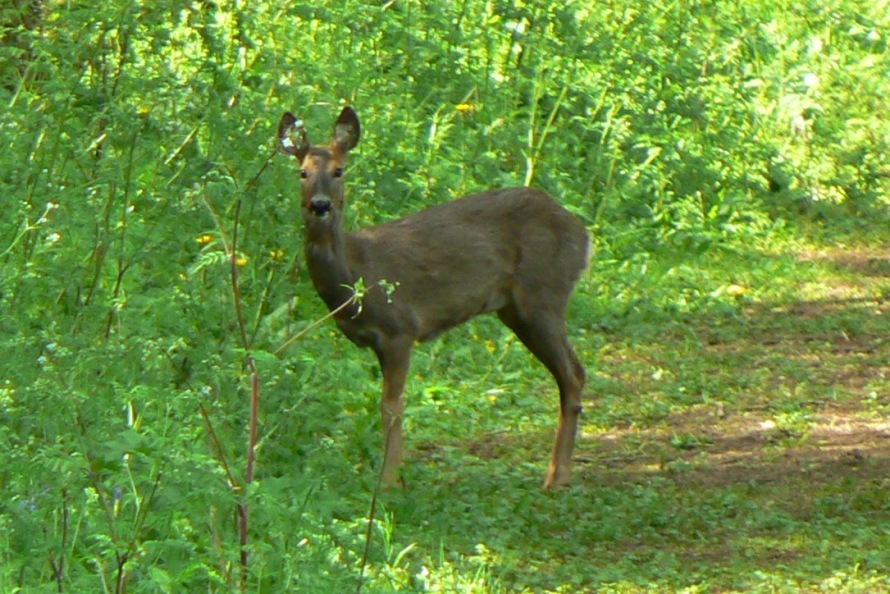
See also
You never know what you may see in the wild. There are scattered feral populations of wallabies in Britain.
Slightly more likely to be seen are [328] the Wild Boar in the Forest of Dean.

Pingback: [310] Scathophaga stercoria, Yellow Dung Fly | The Species of Britain